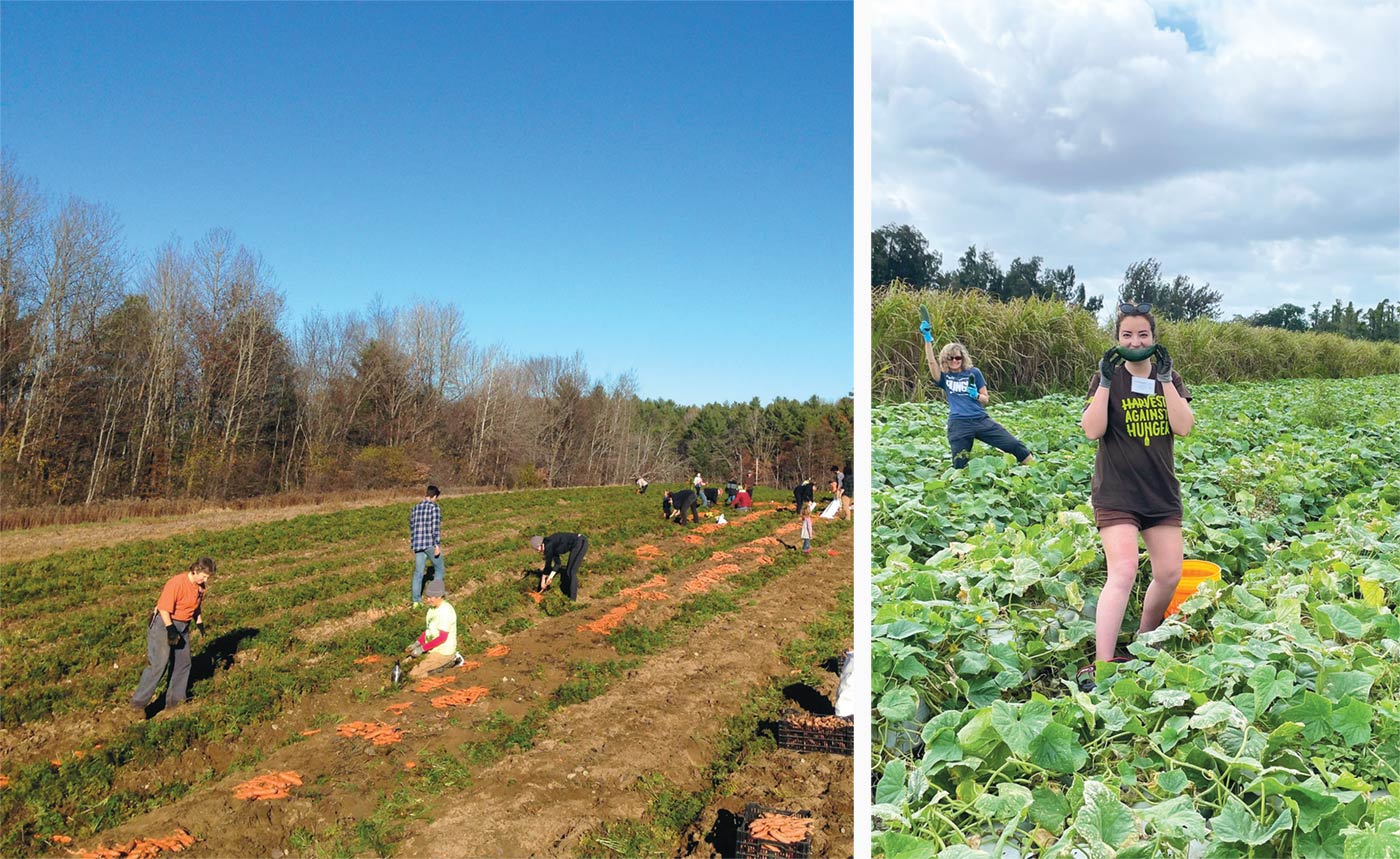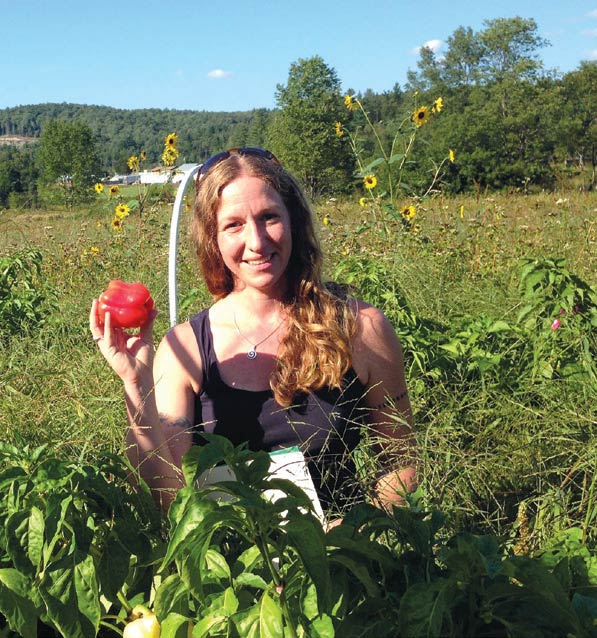Salvation Farms

Just because these carrots may look funky doesn't diminish their nutritional quality. Salvation Farms is
committed to redirecting surplus or less marketable produce to feed people in need
Salvation Farms’ mission is to build increased resilience in Vermont’s food system through agricultural surplus management.
Each year, an estimated 14 million pounds of surplus produce remains on Vermont farms, through no fault of the farmers. How much food is that? Envision a line of more than 7,000 pick-up trucks filled with produce that extends 26 miles long. That’s a marathon of nutrition. Salvation Farms’ mission is to build increased resilience in Vermont’s food system through agricultural surplus management. So, what exactly does that mean and how does it translate into action? We work with farms to redirect that surplus food to feed Vermont residents in need. Our goals are four-fold:
- To reduce food loss on farms,
- Increase the use of locally grown food,
- Foster appreciation for Vermont’s agricultural heritage and future,
- Support the development of just, local food systems.
Working with farmers, partners, and community members, we move wholesome foods that have no market to those in need of nourishment. Primary outlets for farm surplus include charitable food sites—food shelves and senior meal programs—and institutions such as prisons and schools. Some of the surplus we gather is purchased from farms while other times the produce is donated by farms. Our approach is dynamic and includes gleaning, brokering (the purchase and sale of surplus), aggregation, processing, raw packing, and freezing the product. We also focus on volunteer and community engagement, workforce development, technical assistance, research, and advocacy. The organization is inspired to make systems-level impact through addressing local supply chain gaps and fostering social behavior change through exposing individuals to local farms and local food. We work at the system and symptom-level, creating daily impact and lasting change.

Molly Gray, Vermont's lieutenant governor, visiting one of Salvation Farms’ warehouses packed with surplus produce
Primary outlets for farm surplus include charitable food sites—food shelves and senior meal programs—and institutions such as prisons and schools.
Salvation Farms evolved from my passion for agriculture, resource management, and ideals related to building independence through interdependence. I love that Salvation Farms provides people the opportunity to become acquainted with local farms and local, in-season foods. I was raised within peddling distance of my grandparents’ dairy farm in Morrisville, and backyard vegetable gardens, perennial berries, and the occasional pig surrounded my family home. I later earned my degree in natural resource management and sustainable agriculture from Sterling College, which intensified my drive to be a responsible steward of the natural environment.
In the fall of 2001, I was an AmeriCorps volunteer in Manhattan serving individuals devastated by the collapse of the World Trade Center. The experience shook me profoundly as did the undeniable truth: When the systems we rely on cease to provide for our most fundamental needs, we are rendered helpless. This occurred for thousands of families in the fall of 2001, again in 2011 with the landfall of Tropical Storm Irene in Vermont, and most recently with the impact of the global pandemic on populations across the globe. Situations such as these reveal vulnerabilities in our social, health, and economic structures and remind us that, in good and hard times, responsible stewardship of local resources to meet basic needs is essential to community resilience.
Salvation Farms began its work in 2004 as a grassroots gleaning project serving the Lamoille Valley in north-central Vermont. Gleaning is the ancient, biblically referenced, agrarian activity of reaping after the harvest. When produce remains on farms, the farmers, their families, and their employees consume some. Often, large amounts are tilled into the soil, added to compost piles, or fed to animals. These are admirable and resourceful options for a farm—the unharvested or unsold food becomes an input and serves to become food again. However, Vermont’s surplus farm food could also feed our communities and help rebuild locally reliable and resilient food systems.
Let’s consider a carrot. For carrots that don’t make it out of the field, gleaners may enter the field to harvest what the farm doesn’t have the capacity to store, or perhaps lacks a paying market. These field-gleaned volumes tend to be smaller, best collected with the help of volunteers, and distributed to local food shelves and meal programs.
Carrots harvested by the farm and run through a wash/pack-line after harvest or after months of storage always result in culls, sometimes in large volumes. These carrots “don’t make the grade” to meet the specifications of the farm’s paying market. They may be twisted, short, over-size, crooked, broken, or forked. And while they are naturally beautiful and edible, they are, most often, not marketable.
Some crops are identified as not suitable for distribution in their whole or raw form and are set aside for minimal processing. For us, this involves creating a frozen product. Once collected, packed, or processed, distribution kicks in, serving sites that feed the nutritionally and financially insecure. Crops that didn’t make the cut for either raw packing or minimal processing are sent off to become compost or turned into animal feed.
Field-gleaned volumes tend to be smaller, best collected with the help of volunteers, and distributed to local food shelves and meal programs.

(left) Teams of volunteer gleaners gather excess farm produce that might otherwise go to waste. Salvation Farms serves as the backbone of the Vermont Gleaning Collective. (right) Gleaners in a sea of cucumbers and summer squash
The path of the organization took a few twists and turns, and we decided to federally incorporate as a nonprofit in 2011. It was clear to us that Vermont didn’t have an organization focused on the existing abundance of surplus farm food or the fact that using this food could inform what infrastructure, operations, and logistics are needed to develop short supply chains to put more local food on the plates of more people. Incorporating allowed Salvation Farms the opportunity to fill this gap and to develop our expertise in the area of managing farm surplus and short supply chain development. It has allowed us to advance our efforts through engaging unique partners in the for-profit and nonprofit sector, state departments, and higher education, as well as community members of all types. We’ve been able to apply our systems thinking, collective impact, and “seventh generation” approach to engage community and to manage a local resource, supporting farmers and the economy. Salvation Farms has awakened Vermont to the issue of food loss on farms and provides solutions.
Some of our accomplishments include building Vermont’s most replicated gleaning model, creating and serving as backbone to the Vermont Gleaning Collective, designing and launching a web-based platform to serve gleaning efforts in Vermont, and helping to found a national association of gleaning organizations. We have also created light processing procedures for surplus crops, developed a post-harvest handling and light manufacturing training curriculum for individuals facing employment barriers, and we have operated one of the first brick-and-mortar food hubs focused only on managing surplus produce. Last, we have conducted the first statewide food-loss-on-farm study in the nation.
Salvation Farms welcomes the involvement of volunteers in our work. Folks interested in volunteering can visit our website to sign up. If they are particularly interested in gleaning, they can register with the Vermont Gleaning Collective. Because managing this marathon of nutrition relies on many and can sustain us all.

Theresa Snow, Salvation Farms’ founder and executive director, back where
it all began: harvesting wholesome Vermont produce to feed people in need
Salvation Farms has conducted the first statewide food-loss-on-farm study in the nation.
THE FACTS
- Approximately 16 percent of all edible vegetables and berries grown in Vermont never leave the farm, never to be consumed.
- Salvation Farms’ reduction of food loss since 2018 nears a half-million pounds, resulting in more than 1.5 million servings of local food reaching folks with limited access.
- Some 70 to 92 percent of volunteers and recipient food sites report increased awareness of local farms and in-season foods, as well as an increase in comfort using local foods.




